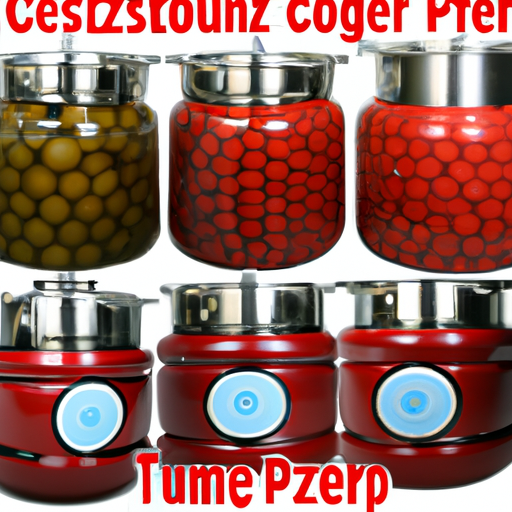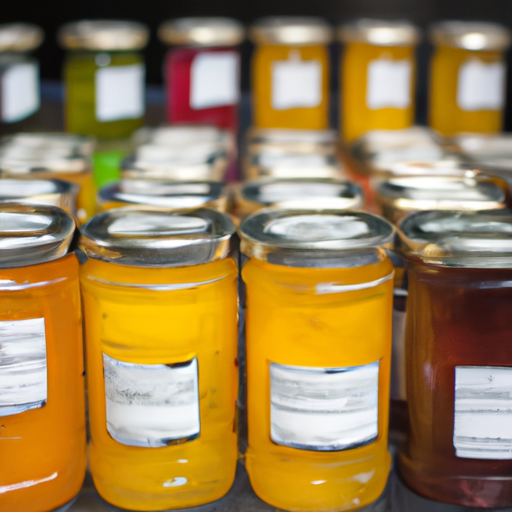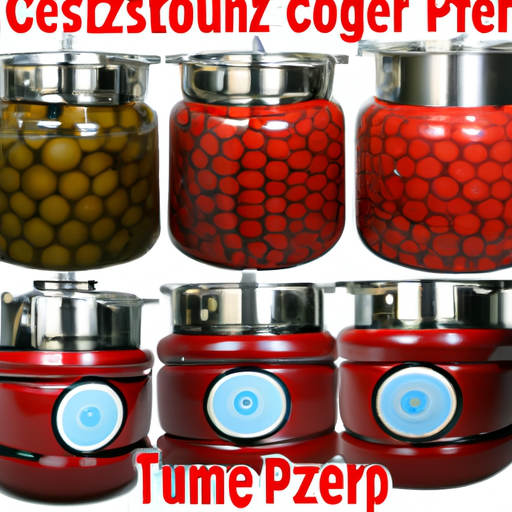If you’re a canning enthusiast, you may have wondered whether it’s possible to use the same pressure canner for different jar sizes. The good news is that you can! Pressure canners are designed to accommodate various jar sizes, allowing you to preserve a variety of foods in your pantry. In this article, we’ll explore the versatility of pressure canners and provide some helpful tips for canning different jar sizes. So, grab your jars and let’s get canning!
Can I can different jar sizes with the same pressure canner?
Understanding pressure canning
Pressure canning is a method of preserving food by sealing it in jars and heating it to a specific temperature under pressure. This process kills any bacteria, yeasts, or molds present in the food, making it safe for long-term storage. Pressure canning is suitable for low-acid foods with a pH above 4.6, such as vegetables, meats, and soups.
The importance of jar size in pressure canning
Jar size plays a crucial role in pressure canning. The size of the jar affects the processing time and heat penetration required to safely preserve the food. Using the right jar size is essential to ensure proper heat distribution and ensure that the food is effectively sterilized.

Types of jar sizes
There are various jar sizes commonly used in pressure canning. The most popular sizes include pint (16 ounces), quart (32 ounces), and half-gallon (64 ounces) jars. Each size has its advantages and disadvantages, depending on the type of food being canned and personal preferences.
Using different jar sizes in pressure canning
It is possible to use different jar sizes in the same pressure canner. However, it is essential to make several adjustments to ensure safe and effective canning. Mixing jar sizes in a canning batch requires careful consideration of processing time, pressure canner settings, and the specific food being canned.

Advantages of canning different jar sizes
Canning different jar sizes offers several advantages. One advantage is maximizing canning capacity. By using various jar sizes, you can fit more jars in the pressure canner, allowing you to preserve a larger quantity of food in a single batch. Additionally, different jar sizes offer flexibility in portion sizes. You can choose smaller jars for individual servings or larger jars for family-sized portions. Canning different jar sizes also allows you to preserve a variety of foods, accommodating different recipes and preferences.
Disadvantages of canning different jar sizes
While there are advantages to canning different jar sizes, there are also some disadvantages to consider. One disadvantage is increased complexity in processing. Each jar size may require different processing times and temperature adjustments, adding complexity to the canning process. Inconsistent heat penetration is another concern when using different jar sizes. Smaller jars may heat up faster than larger ones, resulting in uneven heat distribution within the canner. This can affect the safety and quality of the canned food. Additionally, the risks of improper sealing and uneven distribution of pressure may increase when using different jar sizes.
Safety considerations when canning different jar sizes
When canning different jar sizes, it is crucial to prioritize safety. Using reliable and tested recipes is essential to ensure proper processing times and pressure settings. Proper sealing and vacuum are critical to prevent spoilage and bacterial growth. It is important to monitor the pressure and temperature accurately throughout the canning process to ensure that the food reaches the necessary temperature for safe preservation.
Tips for using different jar sizes in pressure canning
To successfully can different jar sizes in a pressure canner, consider the following tips:
-
Select appropriate jar sizes for different foods: Choose the jar size that best fits the type of food you are canning. Smaller jars work well for jams and sauces, while larger jars are suitable for soups and stews.
-
Understand processing adjustments: Different jar sizes may require adjustments in processing times and pressure settings. Consult reliable canning resources or recipes to determine the appropriate adjustments for each jar size.
-
Follow recommended guidelines and recipes: It is crucial to follow reliable canning guidelines and tested recipes to ensure safe preservation. These resources provide specific instructions for different jar sizes and types of food.
-
Check for proper headspace: Headspace refers to the space between the top of the food and the rim of the jar. Ensure that each jar has the appropriate headspace as recommended in the recipe to allow for expansion during processing and proper sealing.
-
Use the correct canning lids and rings: Different jar sizes may require different sizes of canning lids and rings. Ensure you are using the appropriate size for each jar to achieve a proper seal.
Conclusion
In conclusion, it is possible to can different jar sizes with the same pressure canner. However, it is essential to consider the impact of jar size on processing time and heat penetration. Understanding the advantages and disadvantages of canning different jar sizes can help you make informed decisions when preserving your food. By following proper safety guidelines, adjusting processing times and pressure settings, and using reliable recipes, you can successfully can different jar sizes and enjoy the benefits of home-preserved food.
